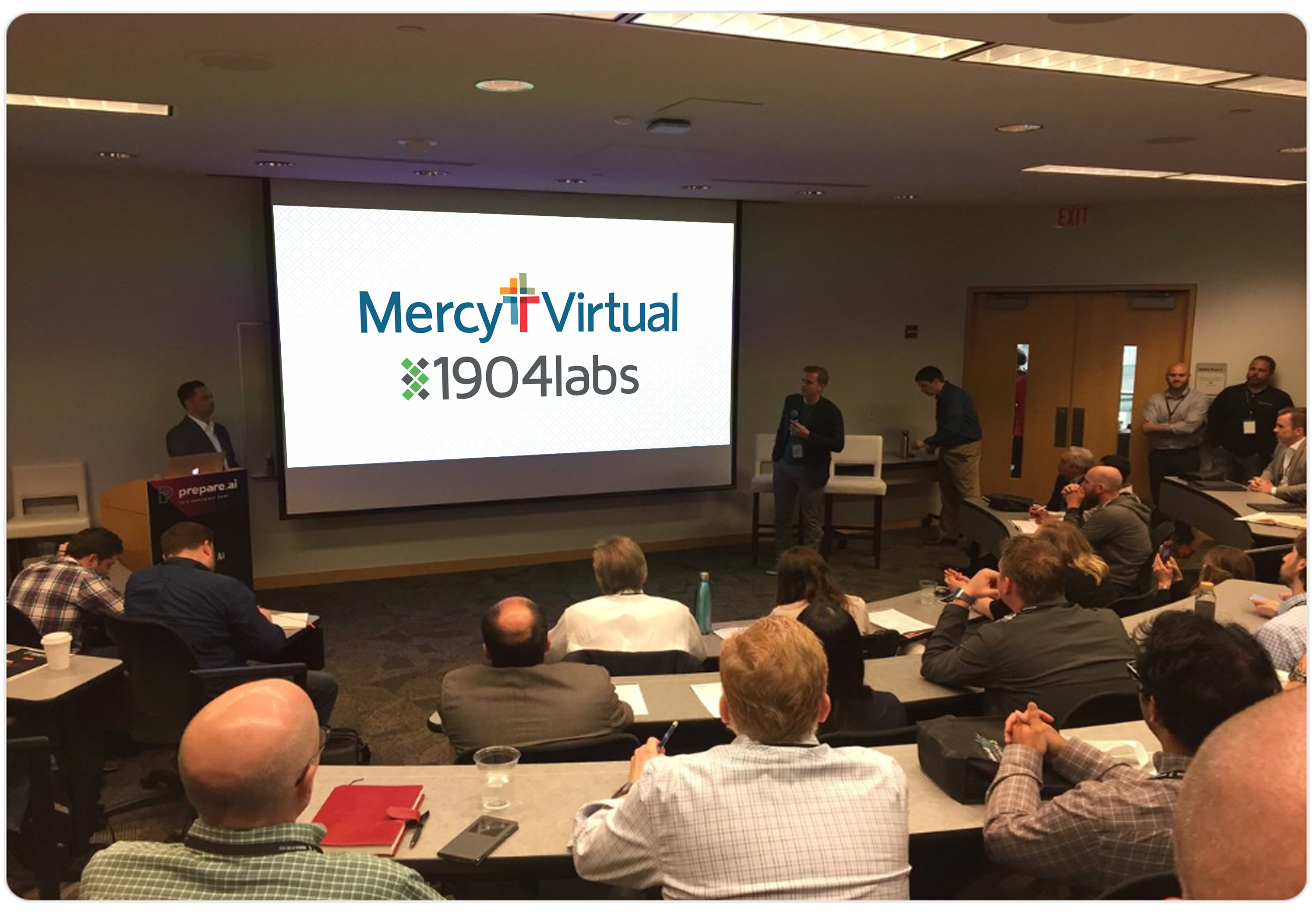As machine-learning and AI continue to evolve, an important question has emerged in the healthcare industry: How can healthcare professionals and patients benefit from these sophisticated technologies?
For Mercy Hospital, the answer is predictive healthcare. 1904labs worked with the Mercy Virtual Care Center to develop a machine-learning approach that uses patient data to predict which patients are most likely to be hospitalized. The ultimate goal is to provide alerts to healthcare professionals so they can proactively optimize patient care models and methods, and prevent hospitalizations. In April, 1904labs had the opportunity to give a presentation about the ongoing project at Prepare.AI, an event that explores the wide-reaching impacts that AI is having on our lives and our industries.
We began our project with Mercy with the goal of predicting discrete hospitalizations as a binary event: a patient will be hospitalized within a short timeframe (next 3 or 7 days), or they won’t. This approach proved problematic. Although we were able to develop stable and reliable models using supervised learning methods, the sensitivity and specificity weren’t quite at levels where we or the Mercy Virtual healthcare team was comfortable using the models to affect patient care. Iteration after iteration, we saw marginal improvement, but these incremental gains would not get us where we needed to be. We had to pivot.
We decided to re-approach the problem. This meant taking a step back and pursuing an unsupervised learning approach. Using the same Mercy Virtual patient data, we wanted to see whether patients naturally fell into clusters and what distinguished these groups. This approach proved to be very insightful. Not only did we see clear and distinctive patient clusters emerge over several iterations with various feature sets, we also kept finding a similar group of patients that were at a relatively low risk for hospitalization. We were on the right track.
If you recall, we started this project trying to determine hospitalizations as discrete binary events. We realized that the flaw in our methodology was trying to classify patients as either “not likely to be hospitalized” (0) or “likely to be hospitalized” (1). Instead, it would be much more beneficial to predict the likelihood of patient hospitalization. Refocusing the problem in this way proved to be much more successful.
Predicting whether a patient will someday be hospitalized is not necessarily that helpful for Health Care Providers. Given a long enough timeframe, everyone has a high likelihood of hospitalization. Additionally, estimating hospitalization risk in a short window (ex: next 3 days) leaves very little time for the Mercy Virtual healthcare team to affect a patient’s prognosis. To make our predictions insightful and actionable, we needed to predict hospitalizations within a short-term timeframe (3 months) and medium-term (6 months). By having a probability for each of these timeframes, health care providers have additional depth for understanding the urgency of the patient’s risk of hospitalization.
The medical staff at Mercy Virtual was very pleased with these new risk scores. In May, the outputs of these models were used to adjust the patient care plans for a select group of patients. Results from this initial patient group were encouraging, and in July the model was applied to a second, larger patient group. The hope is that by the end of 2019, outputs from the model can be applied across the whole Mercy Virtual patient population. While there is still a lot of testing and observation to be done, the potential value to both patients and healthcare organizations is immense.
Roadblocks and snags, like the ones we faced in this project, are bound to happen in any data science endeavor. When you stumble upon a roadblock in projects like these, the best move is often to pivot and try a different approach. It may seem like this change of course is taking you away from your objective. But in our case, allowed us to arrive at the solution we had set out to achieve at the beginning – only one that’s producing more useful results which will enable Mercy Virtual to reduce hospitalizations and provide the best healthcare possible.
Predictive Healthcare: How Machine-Learning Models Can Maximize Patient Care
By:
August 20, 2019
Aug 11, 2022
Read time:
5
min

.png)
.png)
